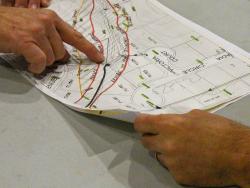-
City Services
-
- Departments Administration Building City Recorder Community Development Community Emergency Response Team Finance Floodplain Management Human Resources Parks & Recreation Public Works Police Urban Renewal Utility Billing
- Commissions and Committees Arts Commission Budget Committee Citizen Advisory Committee Parks Foundation Parks and Recreation Commission Planning Commission
-
Agendas and Minutes
City Council
-
-
Community
-
- Schools Crater High Scenic Middle Central Point Elementary Mae Richardson Elementary Jewett Elementary School District 6 Map Rogue Community College Southern Oregon University
- Special Events Calendar of Events Park Special Events Recreation City Activity Guide City Parks British Soccer Camp Jackson County Expo Bear Creek Greenway Bike Path Rogue River Greenway Bike Path Hiking Paths Made in Southern Oregon
- New to Central Point Chamber of Commerce Central Point Library Justice Court Utility Services Senior Center Post Office Airport Get Involved Commissions & Committees Volunteer Parks Foundation Elections
-
-
Resources
-
- Online Resources Pay Your Water Bill Pay a Ticket Online Job Opportunities Municipal Code Documents and Reports Forms and Applications City Documents Library Portal Water Usage Portal COVID-19 Updates Alerts and Notifications Email Subscriptions Maps
- Events and Meetings Agendas and Minutes Ordinances Resolutions Calendar Local Services Jackson County City of Medford Justice Court Recycling
- Connect Submit a Request or Concern Staff Directory Facebook Twitter In the News City News City Newsletters
-
-
Business
-
- Start a Business Business Licenses Chamber of Commerce Building/Construction Building Permits Inspection Requests Design Criteria Building Forms Bids and RFPs Forms and Permits
- Community Development City Projects Zoning & Land Development Code Long Range Planning Maps
- Urban Renewal Urban Renewal Home
-
-
Public Safety
-
- Communications Mission & Core Values Organizational Chart What We Do Patrol School Resource Officers (SRO) Community Service Officers Police Support Specialists Police Volunteers
- Get Involved Join the Team Becoming a Volunteer Neighborhood Watch Community Emergency Response Team Requests Police Reports and Records Check
- Resources Municipal Code Traffic Safety Police Events/Calendar Court Information Vehicle Impound Release Frequently Asked Questions
-
The City encourages new land division proposal to reserve high risk flood hazard areas as open space. Land divisions that place new lots, structures or other improvements in a high risk floodplain are required to identify and mitigate adverse impacts to existing and anticipated new development as a condition of floodplain development approval. Adverse impacts can be associated with any of the following:
- Increased flood water elevations
- Increased flood velocity
- Expanded flood hazard boundaries
- "Harm" or "Take" of Endangered Species
Since changes to flood hazards may impact other properties’ development and insurance requirements, land divisions in the special flood hazard area utilize Type III procedures requiring landowner notification within 100-feet of the project perimeter and a public hearing prior to the Planning Commission’s decision to approve, approve with conditions or deny the proposal.
Application Requirements
Floodplain development and land division applications may be processed concurrently. To do so, the application must include the following supporting documents in addition to those required for the land division submittal:
- Floodplain Development Application Form
- Identification of adverse impacts and proposed mitigation;
- FEMA Conditional Letter of Map Revision stating that the proposal is consistent with the NFIP and Federal mapping guidelines;
- Endangered Species Habitat Assessment and Federal agency approval (processed by FEMA as part of the CLOMR application).
Based on our experience, this can be a time consuming process. We recommend that you consider the following actions to produce the best possible application and reduce delays in the review process:
- Address floodplain impacts any needed mitigation actions early on in your site planning process.
- Utilize professional, experienced professionals in:
- Hydraulic engineering & FEMA flood studies and mapping – to prepare grading plans, encroachment analyses, mapping and CLOMR submittal packet.
- Fisheries and wetland biology – to evaluate existing site conditions and the proposals impacts on threatened or endangered species and their critical habitat. Southern Oregon/Northern California Coast Coho Salmon and their critical habitat on Jackson and Griffin Creeks are the primary concern in Central Point at this time.
- Be prepared to respond to requests for additional information from FEMA and/or the National Marine Fisheries Service.

